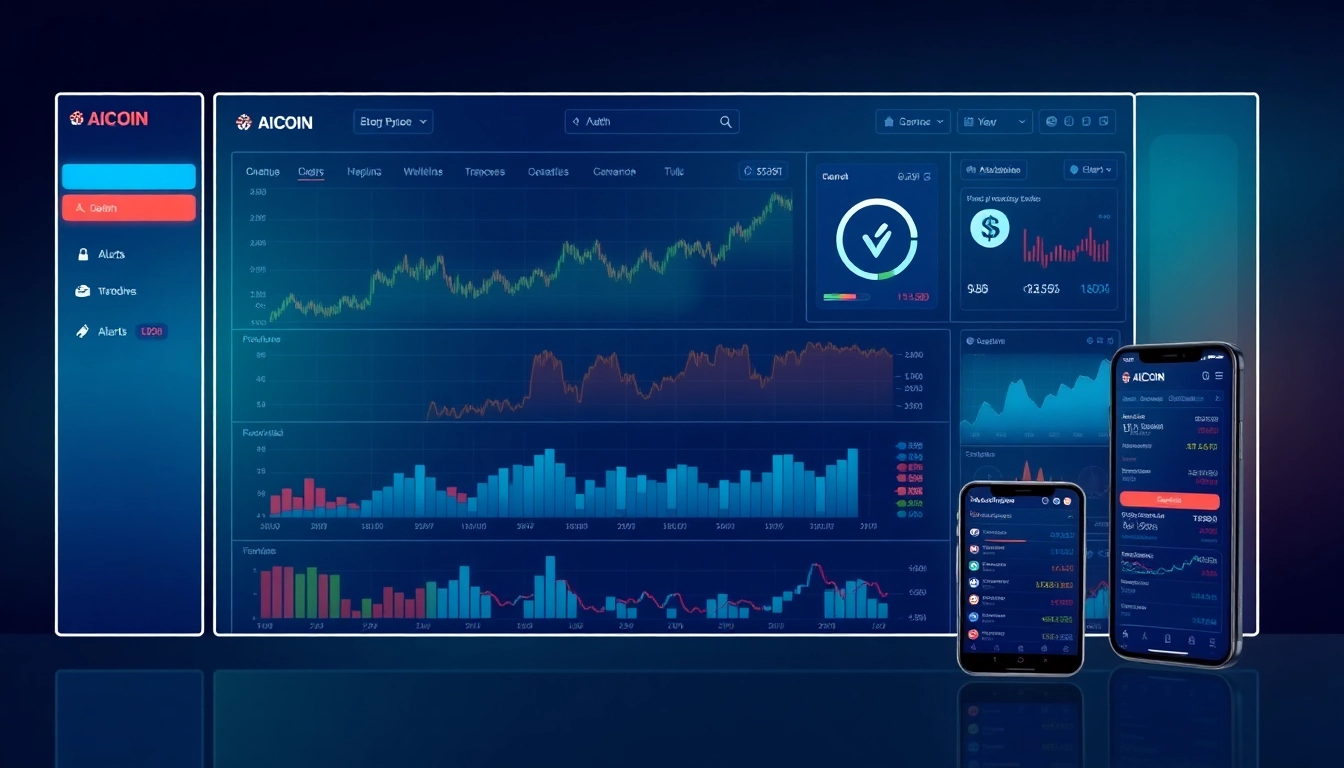Introduction to Python Freelance Opportunities and Market Demand
In the rapidly evolving digital landscape, Python has cemented its position as one of the most versatile and sought-after programming languages for freelancers. Its applications span web development, data analysis, artificial intelligence, machine learning, automation, and beyond. As a freelance Python developer, you’re entering a dynamic market driven by high demand, attractive compensation, and diverse project opportunities. According to current market insights, Python freelancers typically command a daily rate (TJM) ranging from 600€ to 1200€, depending on expertise and project complexity. To maximize your earning potential and secure rewarding projects, understanding the nuances of the Python freelance ecosystem is crucial. For those eager to explore this space, Python remains a cornerstone skill with ever-expanding opportunities.
Understanding Python’s Role in the Freelance Ecosystem
Python’s prominence in the freelance market stems from its simplicity, robustness, and extensive libraries. Freelancers proficient in Python find themselves highly employable across various sectors—tech startups, established enterprises, research institutions, and consultancies. Notably, Python specialists are in high demand for projects involving data science, AI, web frameworks (like Django and Flask), automation, and scripting.
Market data indicates that many organizations prefer freelance Python developers for their flexibility, code efficiency, and ability to integrate complex systems rapidly. From developing RESTful APIs to deploying machine learning models, Python freelancers are integral to delivering modern software solutions. As the freelance economy continues to grow, Python’s role as a versatile, high-paying skill remains undiminished, positioning freelancers to capitalize on this trend effectively.
Current Market Trends for Python Freelancers
Recent market analyses reveal several key trends shaping the landscape for Python freelancers:
- Increasing demand for AI and machine learning expertise: Companies are seeking freelancers experienced in frameworks like TensorFlow and Scikit-learn to develop innovative AI solutions.
- Remote work adoption: Approximately 40% of Python freelance projects are now remote, allowing professionals worldwide to access global opportunities.
- Growth in data-centric projects: Big data analytics, business intelligence, and data engineering projects are prompting demand for Python-based data pipelines, ETL processes, and data visualization.
- Focus on automation: Python’s scripting capabilities make it ideal for automating repetitive tasks, which is a top priority for organizations seeking efficiency gains.
Market insights also identify key sectors sourcing Python freelance talent—finance, healthcare, e-commerce, and AI research — reflecting the language’s broad applicability. Staying aligned with these trends ensures freelancers remain competitive and sought after in this lucrative ecosystem.
Identifying High-Paying Python Projects
High-paying Python projects typically involve complex, high-stakes work that requires specialized knowledge. Examples include:
- Developing custom AI algorithms or machine learning models for enterprise solutions.
- Building scalable web applications with frameworks such as Django or Flask for high-traffic platforms.
- Implementing automated data pipelines and ETL processes in data engineering projects.
- Creating end-to-end automation solutions for institutional clients needing operational efficiency.
These projects often come with a premium rate, reflecting their technical complexity and added value. Freelancers who hone niche expertise—such as deep learning, natural language processing, or enterprise-grade deployment—can command closer to 1000€ per day or more. To identify such opportunities, platforms like JobForFreelancers aggregate the most lucrative Python projects tailored to freelancers’ skill levels.
Essential Skills and Tools for Python Freelancers
Key Python Frameworks and Libraries to Know
Mastery of Python’s core frameworks and libraries significantly enhances a freelancer’s portfolio. Important ones include:
- Data Science & Machine Learning: Pandas, NumPy, Scikit-learn, TensorFlow, Keras, PyTorch
- Web Development: Django, Flask, FastAPI
- Automation & Scripting: Selenium, Scrapy, Paramiko
- Data Visualization: Matplotlib, Seaborn, Plotly, Dash
Choosing to specialize in one or more of these domains allows freelancers to target high-paying niche markets and showcase deep expertise.
Tools for Remote Collaboration and Project Management
Effective communication and project management are vital for freelance success. Key tools include:
- Git and GitHub for version control
- Jira or Trello for task management
- Slack or Microsoft Teams for communication
- Docker and Kubernetes for deployment and containerization
Proficiency with these tools not only streamlines project workflows but also demonstrates professionalism to prospective clients.
Building a Strong Python Portfolio to Attract Clients
Creating a compelling portfolio involves showcasing a curated selection of projects that highlight technical skills, problem-solving abilities, and results delivered. Best practices include:
- Developing real-world projects or contributions to open-source Python libraries.
- Documenting projects thoroughly with readme files, code comments, and case studies.
- Including metrics to quantify impact—e.g., improved processing speed, increased accuracy, or automation efficiency.
A well-crafted portfolio on platforms like GitHub, coupled with a personalized website, enhances credibility and attracts higher-value clients.
Strategies for Finding and Landing Python Freelance Jobs
Where to Find Python Freelance Gigs and Job Boards
Top platforms to discover Python freelance opportunities include:
- JobForFreelancers
- Upwork
- Freelancer
- Toptal
- Indeed and specialized tech job boards
Employer preference for remote and flexible arrangements has increased competition, so tailoring applications and building lasting relationships are key to success.
Crafting Winning Proposals for Python Projects
Effective proposals should demonstrate understanding of client needs, outline your approach, and reflect your expertise. Tips include:
- Personalize each proposal to address specific project requirements.
- Include relevant case studies or samples that align with project scope.
- Be transparent about timeline, deliverables, and rates.
- Highlight unique skills, such as experience with particular frameworks or industry sectors.
Negotiating Rates and Managing Client Expectations
Negotiation is a critical skill. Use data-driven insights from established market rates, and be prepared to justify premium charges based on your expertise. Clear communication on scope, deadlines, and deliverables reduces misunderstandings and fosters long-term collaborations.
Optimizing Your Profile and Presence for Python Freelance Success
Personal Branding and Online Presence Tips
To stand out, develop a consistent personal brand emphasizing your Python specialization. Maintain profiles on LinkedIn, GitHub, and freelance platforms, highlighting your niche skills, certifications, and client testimonials.
Showcasing Python Projects for Maximum Impact
Curate a portfolio that emphasizes results-driven projects. Present challenges faced, solutions implemented, and quantifiable outcomes achieved. Video demos or interactive dashboards can further elevate your profile.
Leveraging Networks and Freelance Platforms Effectively
Join industry communities, participate in forums, and attend conferences (virtual or physical) to build relationships. Consistent outreach and reputation management on platforms like JobForFreelancers will lead to more premium project opportunities over time.
Case Studies and Success Stories in Python Freelancing
Profiles of Top Python Freelancers and Their Strategies
Many successful Python freelancers began by specializing in emerging niches like AI or automation, earning trust through open-source contributions and client success stories. For example, a freelancer focusing on AI models for finance achieved a daily rate of 1000€ by mastering TensorFlow and presenting compelling case studies on GitHub.
Lessons Learned and Tips for Sustained Growth
Key lessons include continuous learning, diversifying skill sets, and maintaining strong client communication. Staying current with industry developments ensures relevance and better project opportunities.
Future Outlook for Python Freelancers in the Digital Economy
The outlook remains optimistic, with an increasing number of organizations investing in AI, automation, and data-driven strategies. Freelancers who adapt to these trends—by acquiring advanced skills and building strategic networks—will continue to command premium rates and secure high-impact projects well into the future.



